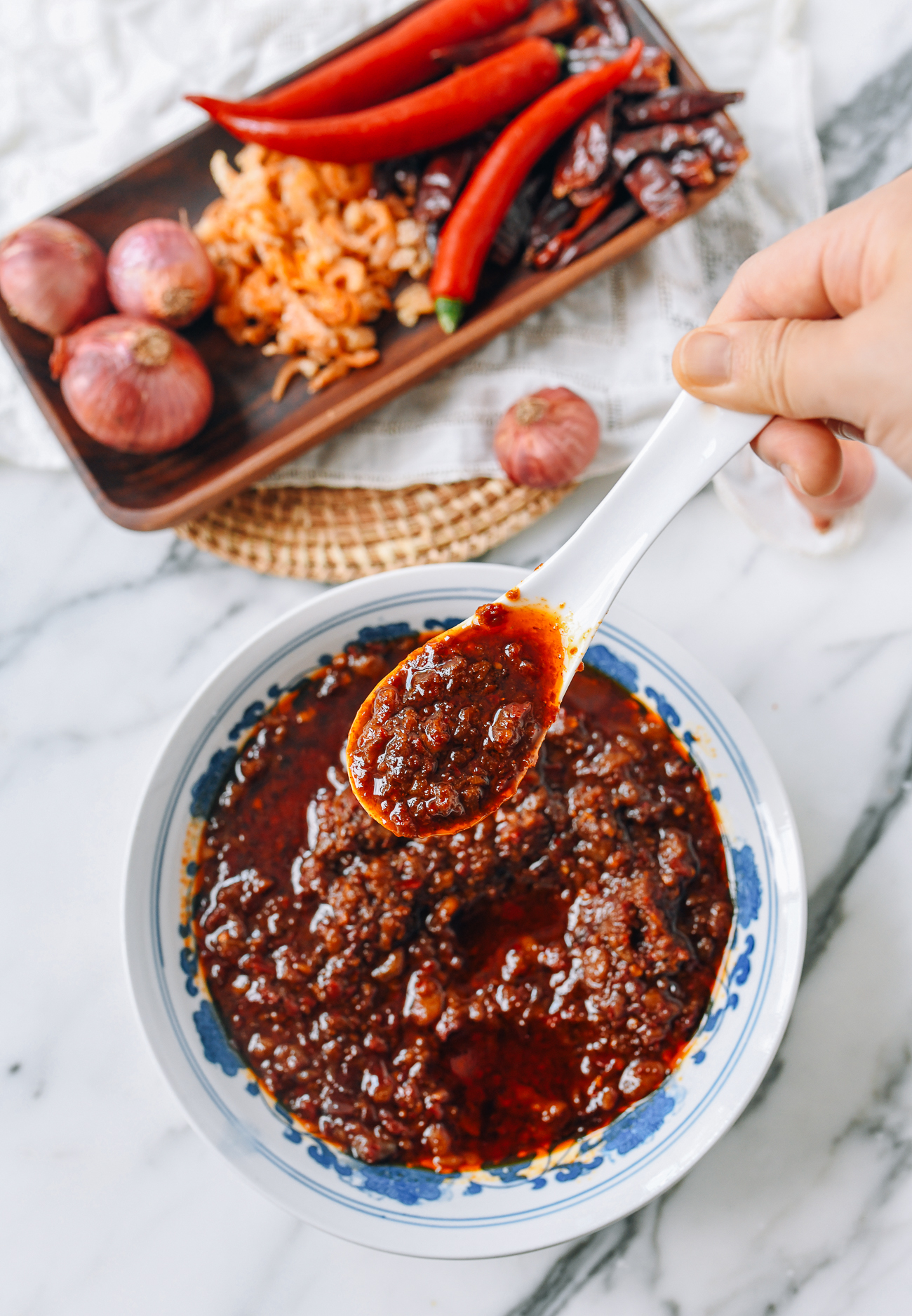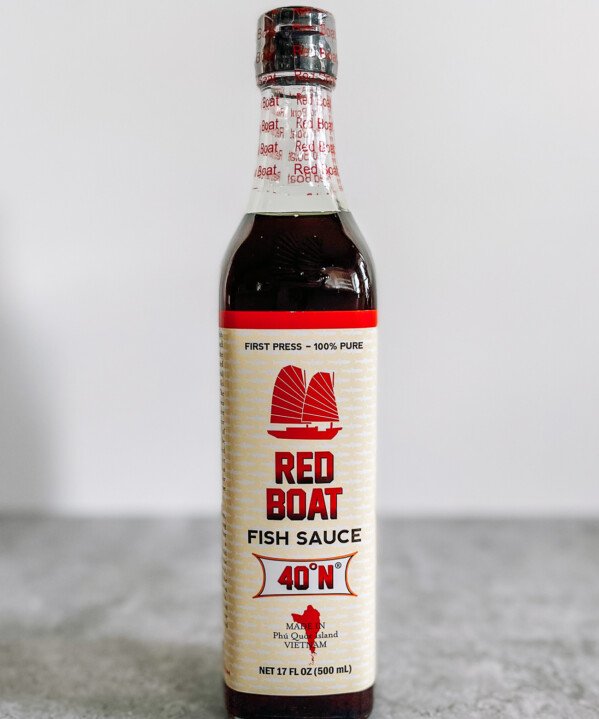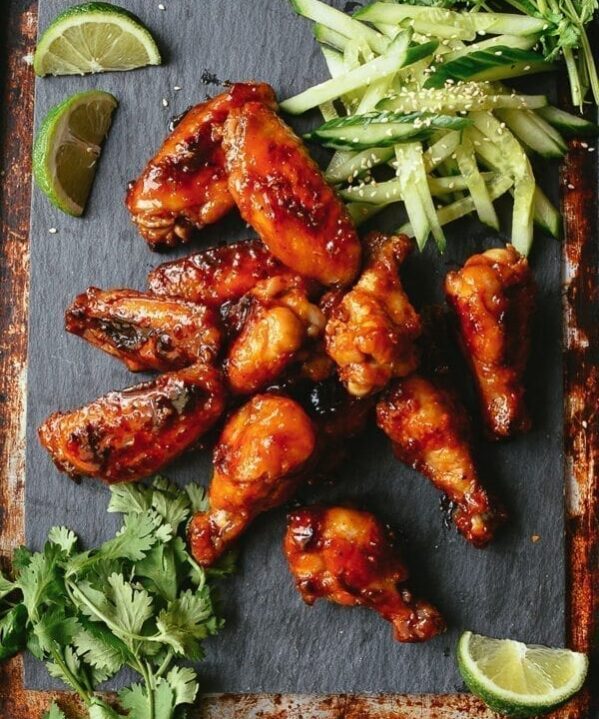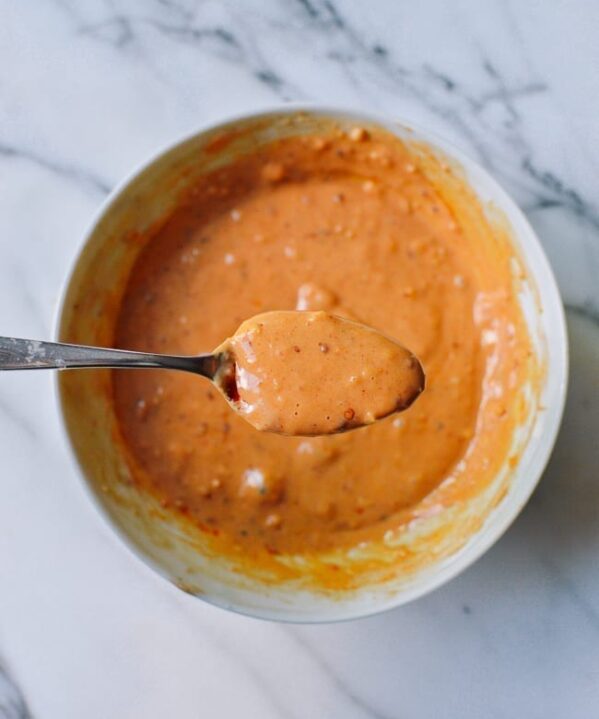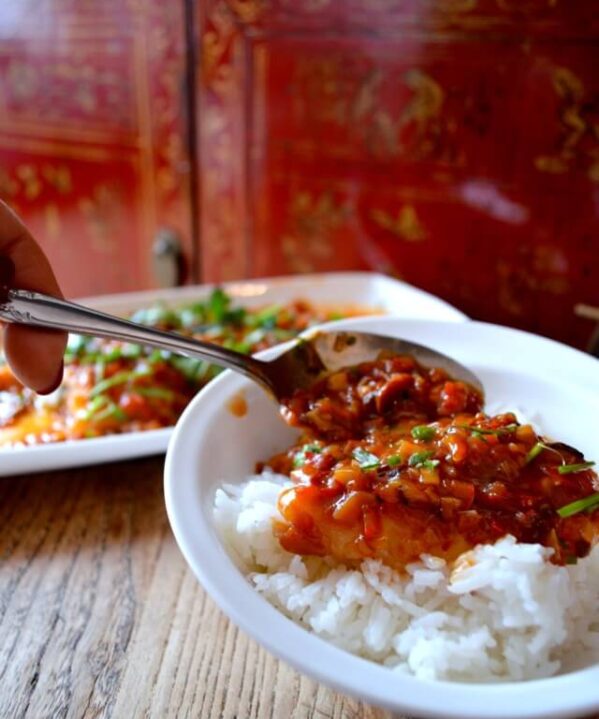Belacan sauce is a Malaysian-style sambal with dried shrimp, fresh and dried chili, and belacan, a fermented shrimp paste. With strong notes of garlic and shallots, this Malaysian-Chinese condiment is as addictive as some of our best sauces: chili oil, XO sauce, and ginger scallion oil. It may just join the ranks of your must-have condiments!
How To Use Belacan Sauce
We used the belacan sauce most often as a condiment with rice or congee as it’s quite salty. We would also sometimes use it as an add-in for cooking certain dishes. If you can’t find belacan, shrimp sauce also works as a substitute.
I remember having a tablespoon or two with some warm white rice, and I personally think that is the best way to eat it.
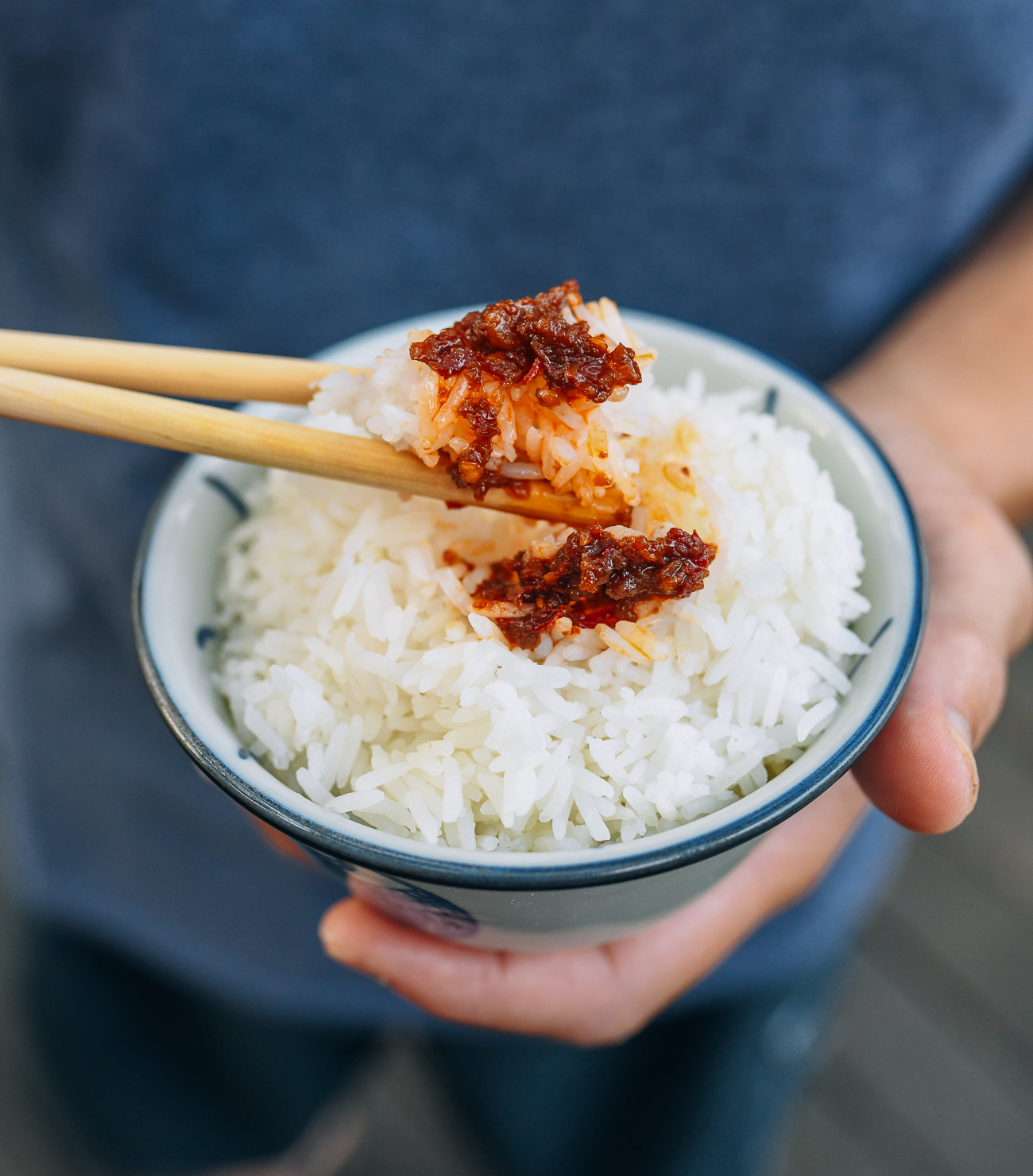
You can also mix a healthy dollop in with noodles, which has recently become a favorite of mine for a quick meal or snack!
A Recipe Created from Memory
I grew up eating this dried shrimp belacan sauce. We call it ma lai zan in Cantonese, or mǎ lā zhǎn (马拉盞) in Mandarin.
We used to buy it from a very small Malaysian restaurant on Doyers Street in NYC’s Chinatown. Picking up a small pint of this belacan sauce from the anonymous soda fridge in the corner of the cramped restaurant was a predictable stop after our monthly drive from the Catskills to Chinatown for fresh produce, Chinese packaged ingredients, and dim sum.
Recently, I missed this belacan sauce so much that I finally decided to recreate it from memory. As I set out to develop this recipe, the tricky thing was that sometimes it was made with dried shrimp, and sometimes it was with small dried anchovies. I’ve opted for the traditional shrimp.
It was also cooked, so it definitely shouldn’t be mistaken for a raw sambal belacan, which is usually made by pounding raw ingredients together in a mortar and pestle. It was also saucier than dried shrimp sambal (known as hai bee hiam in Cantonese).
That said, I think this shrimp belacan sauce recipe is very close to what I had growing up. I will probably continue to tweak the recipe into the future, as little taste and food memories might come back to me. For now, this recipe will be preserved for the family archives!
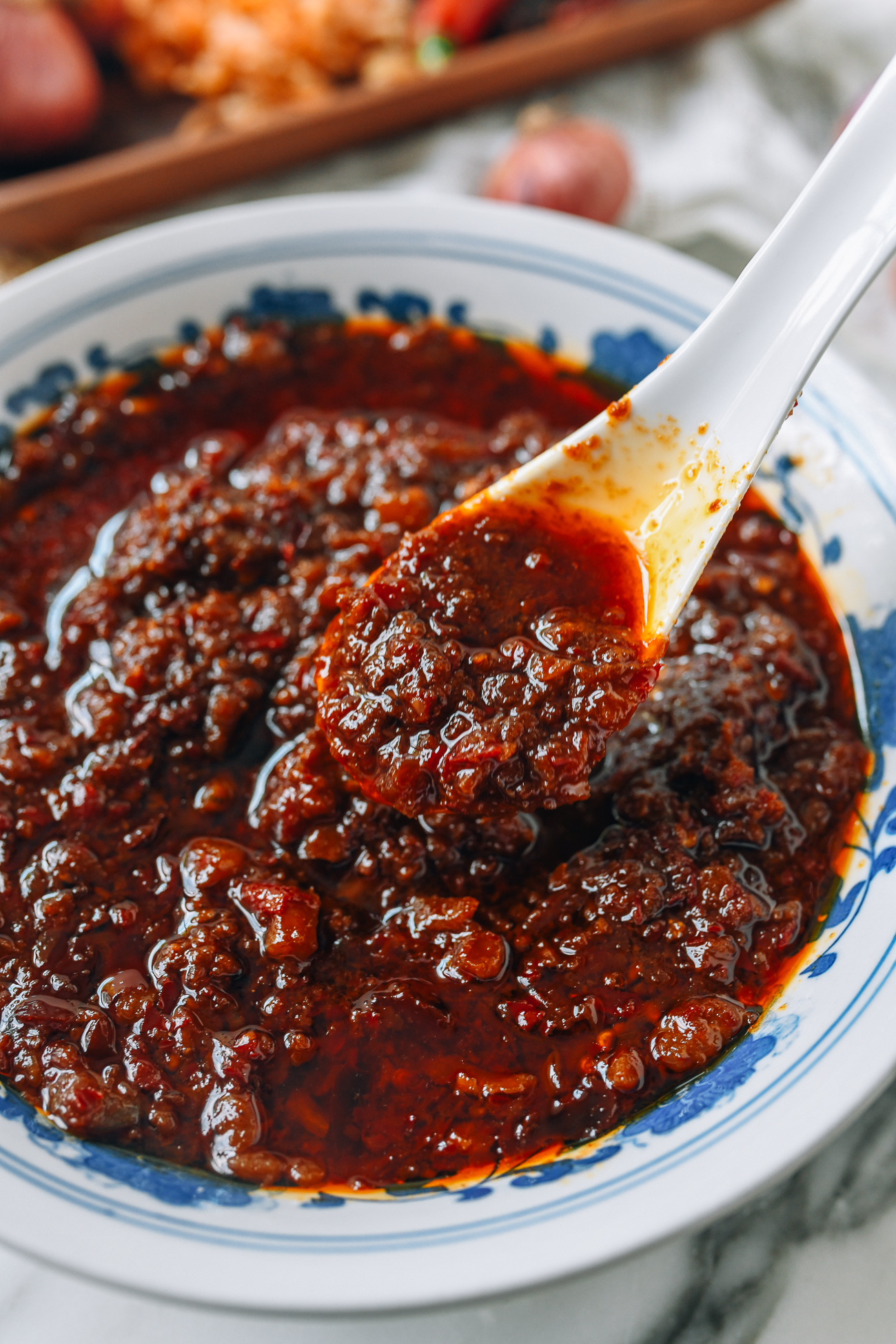
That said, please let us know in the comments if you have ever had something similar, and how it was made! Or if, like us, you were a fan of that little Malaysian restaurant on Doyers Street!
Belacan Sauce: Recipe Instructions
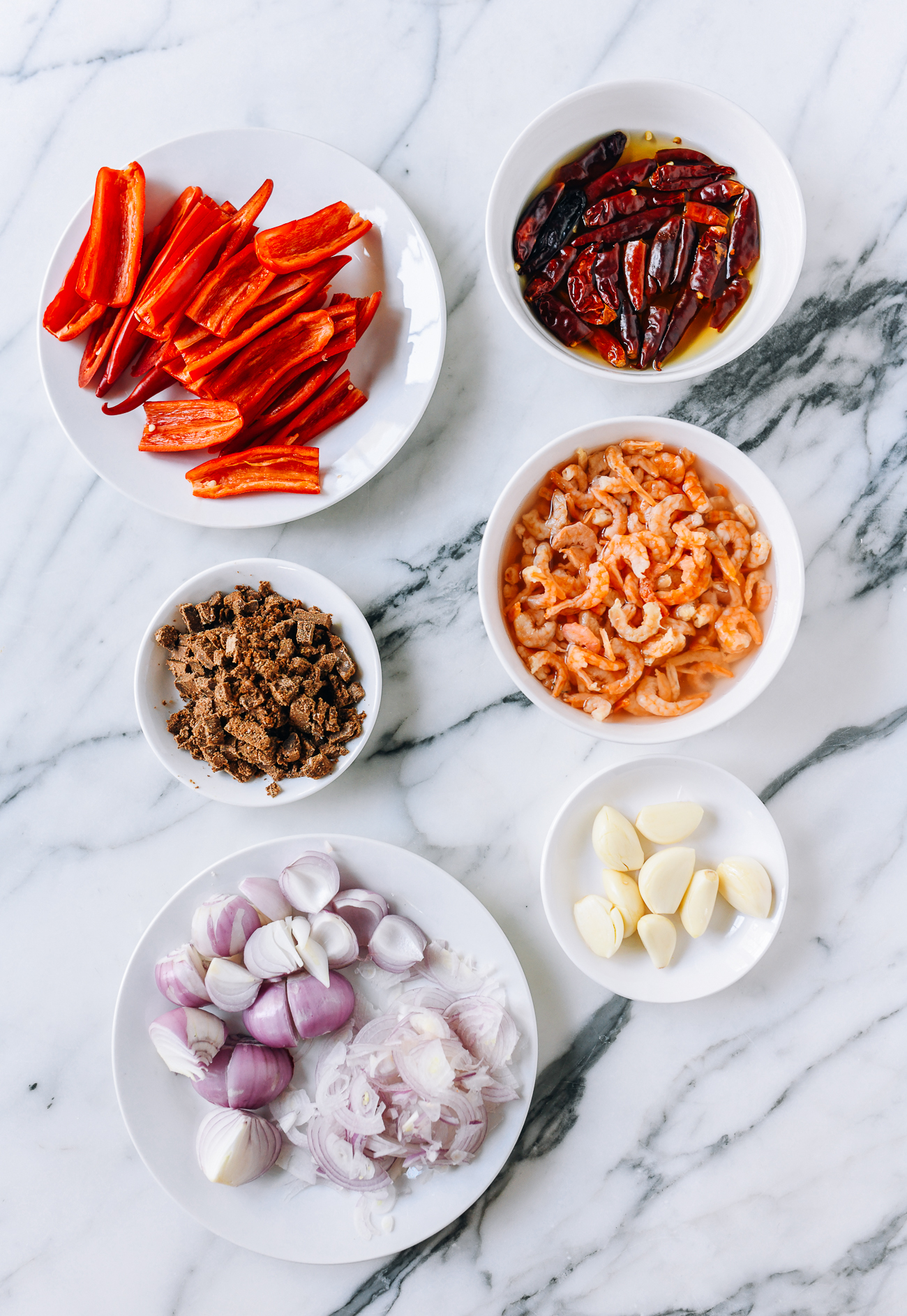
Soak the de-seeded dried chili peppers in 1 cup of warm water for 15-20 minutes.
While the dried peppers are soaking, de-stem and de-seed the Holland peppers, removing the membranes as well. You can leave the seeds in if you like your sauce very spicy. Cut each pepper into 3 pieces. If using, chop the Thai chilies.
Take half of your shallots and finely chop them. With the other half, thinly slice them. (You can also chop them, but I think slices add another textural dimension to the final sauce.
Drain the dried chili peppers, and set aside the soaking water. To the bowl of a food processor or blender, add the dried peppers, Holland peppers, Thai chilies (if using), half of the shallots (i.e. your chopped shallots, setting aside the slices for later), and garlic.

Pulse until the mixture is smooth, or if you prefer, a coarse paste. Use a rubber spatula to scrape down the sides of the bowl to ensure the mixture is evenly processed.
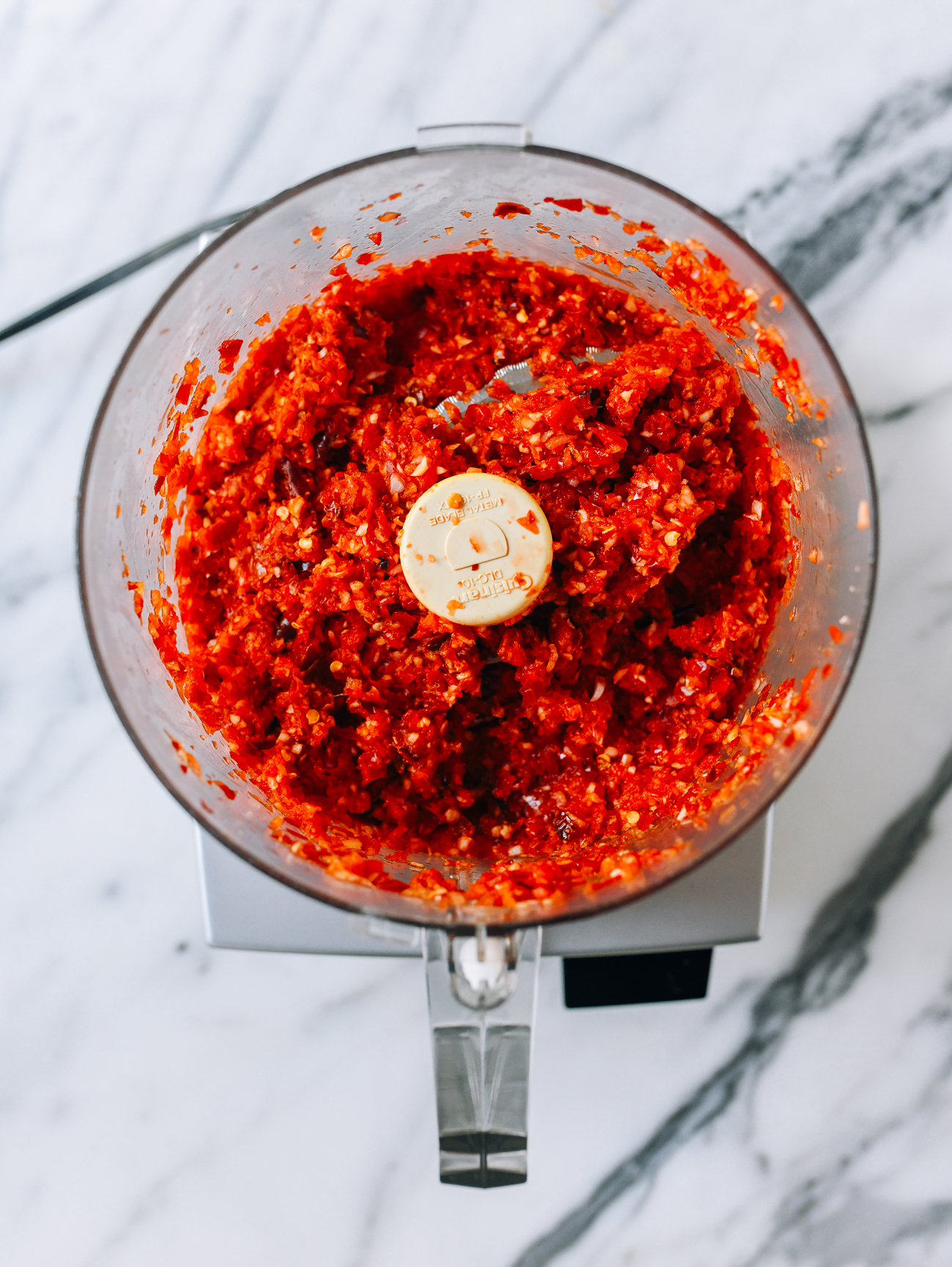
Heat a frying pan or wok over medium heat. Add the oil and chopped dried shrimp.
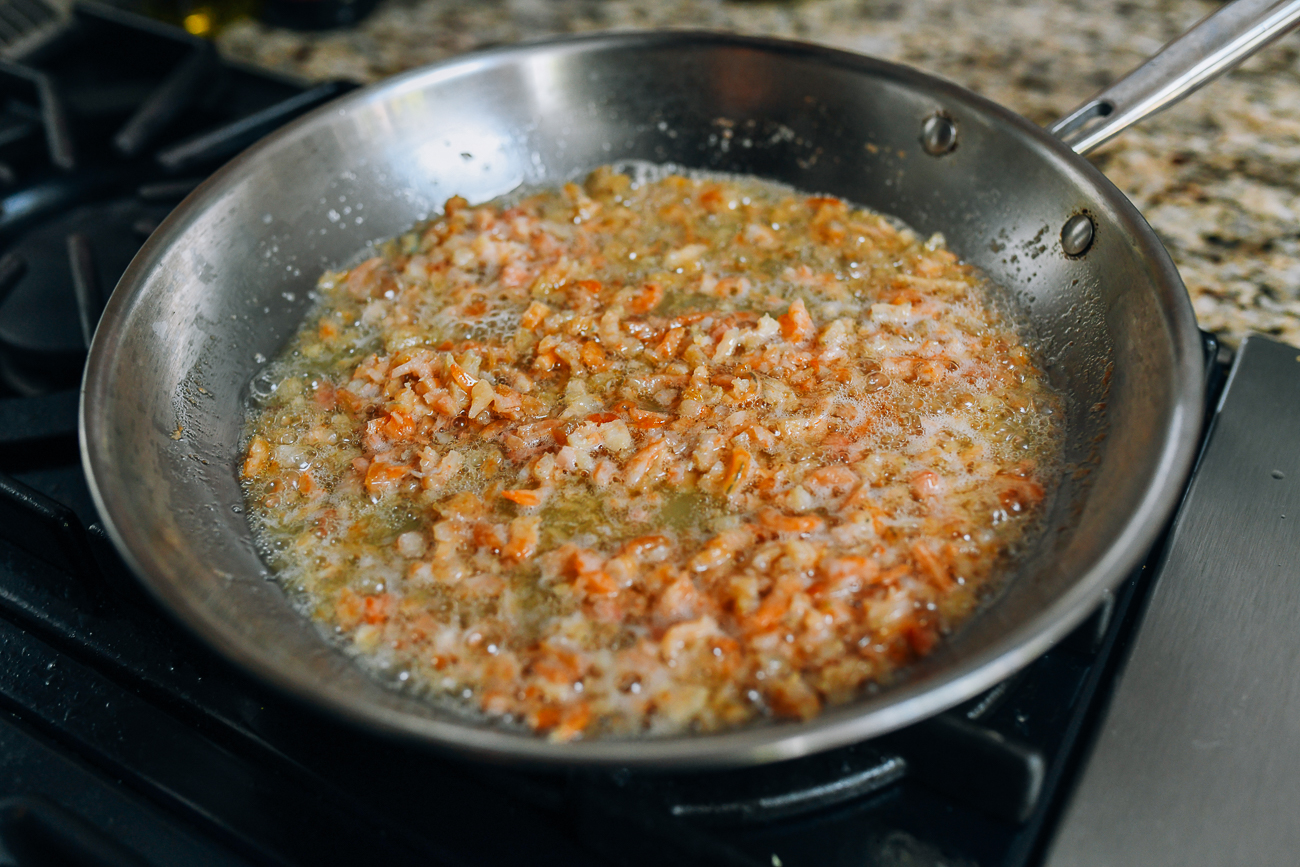
Fry over medium to medium low heat for 3-5 minutes.
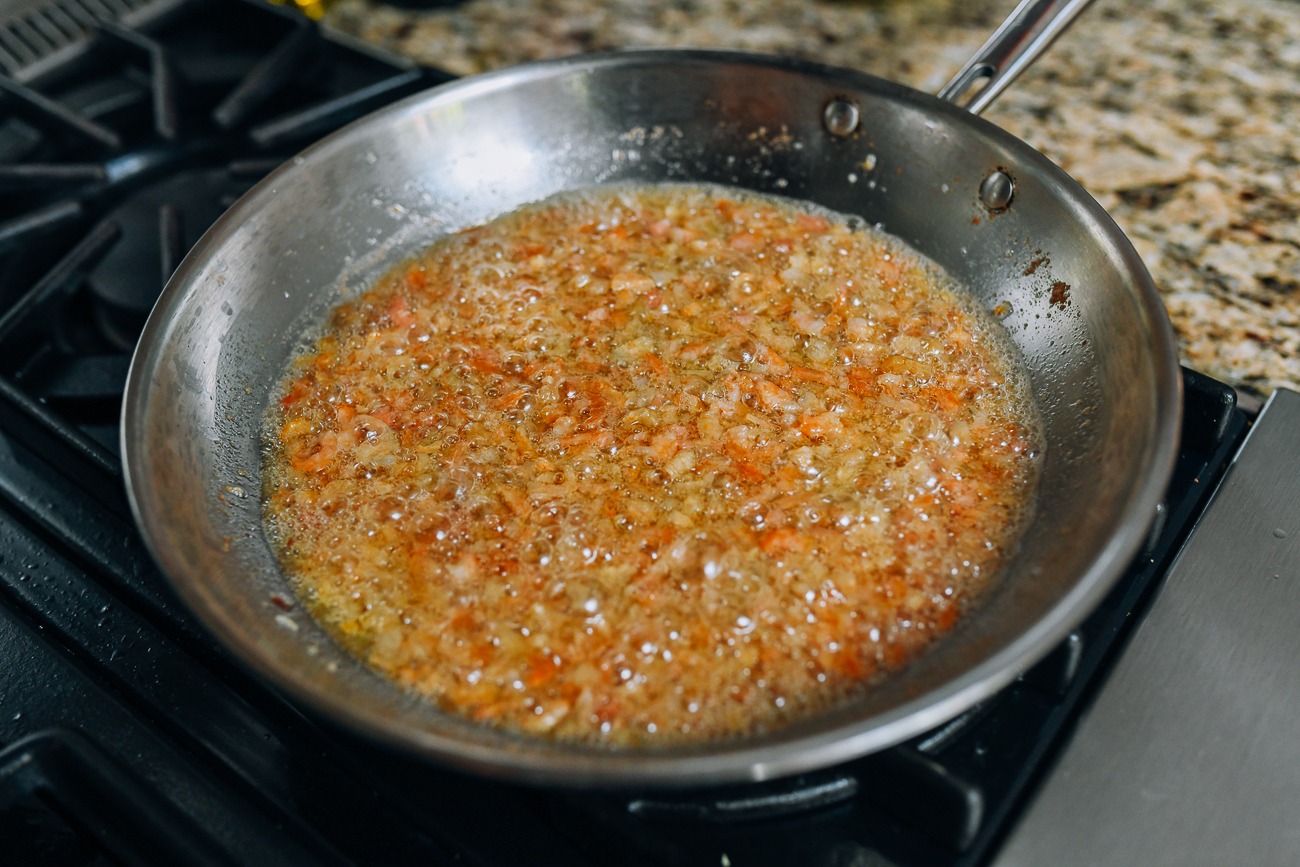
Put the belacan in a mortar and pestle to break it up (you can also put it in a small bowl and break it up with a fork). Add it to the pan.
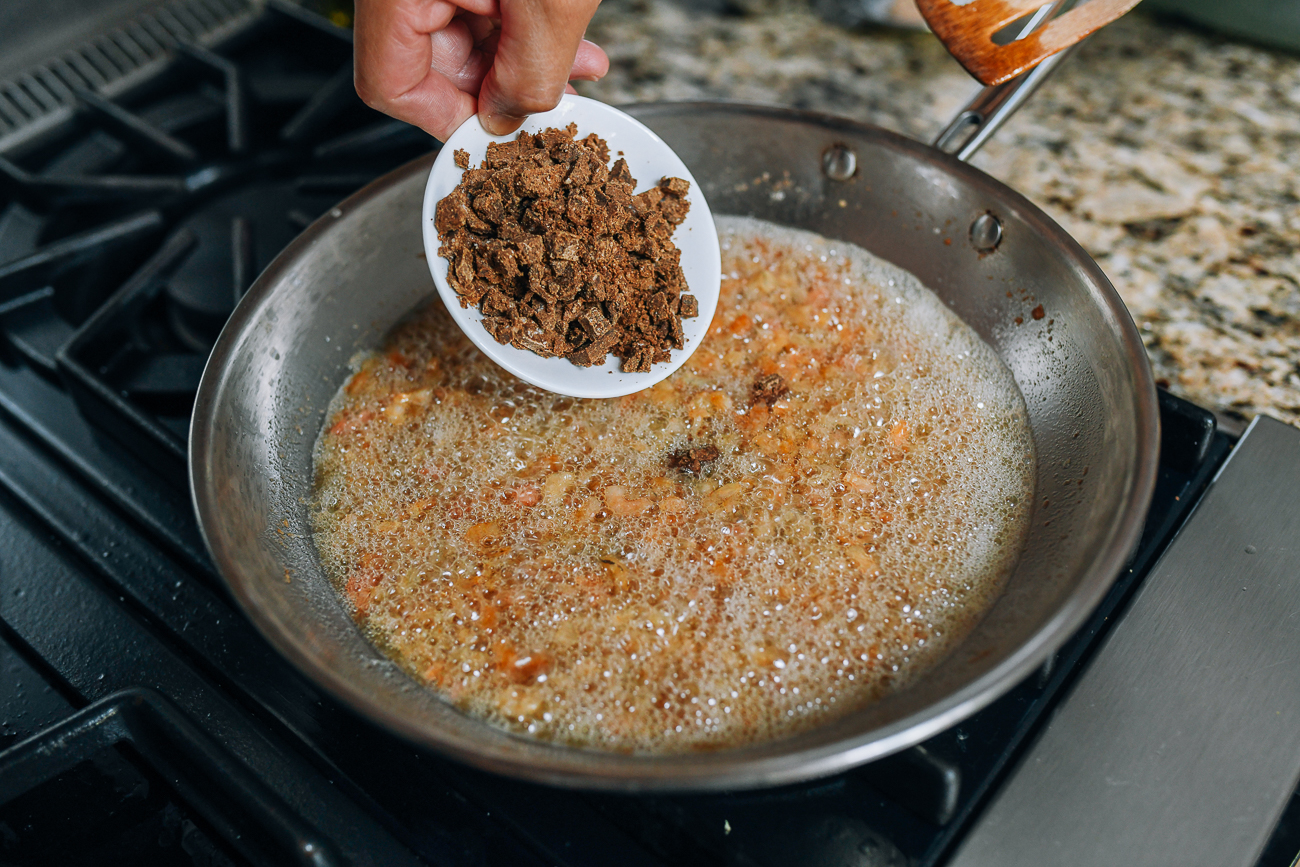
Cook for 3-4 minutes, until the belacan is melted into the sauce.
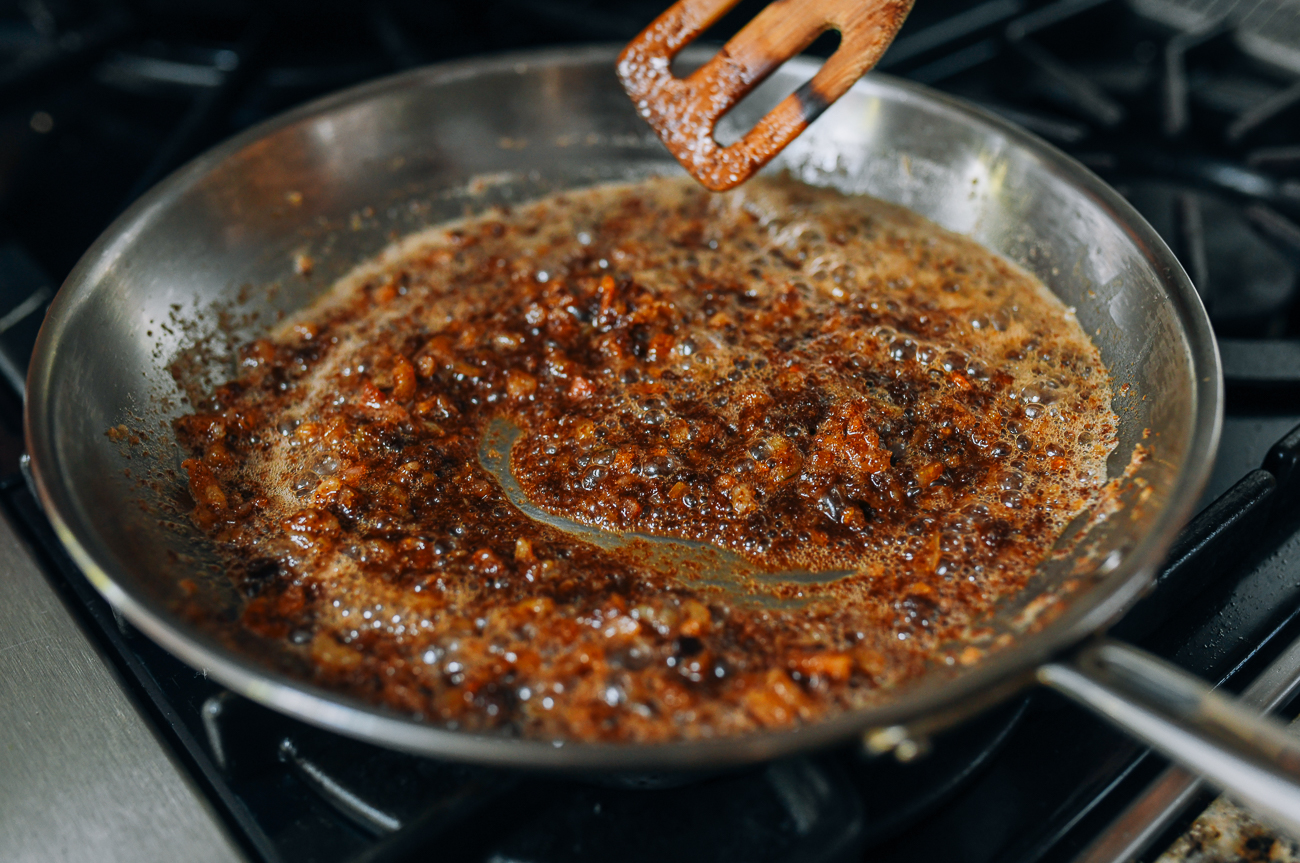
Add the sliced shallots.

Cook for 3-4 minutes, until translucent.
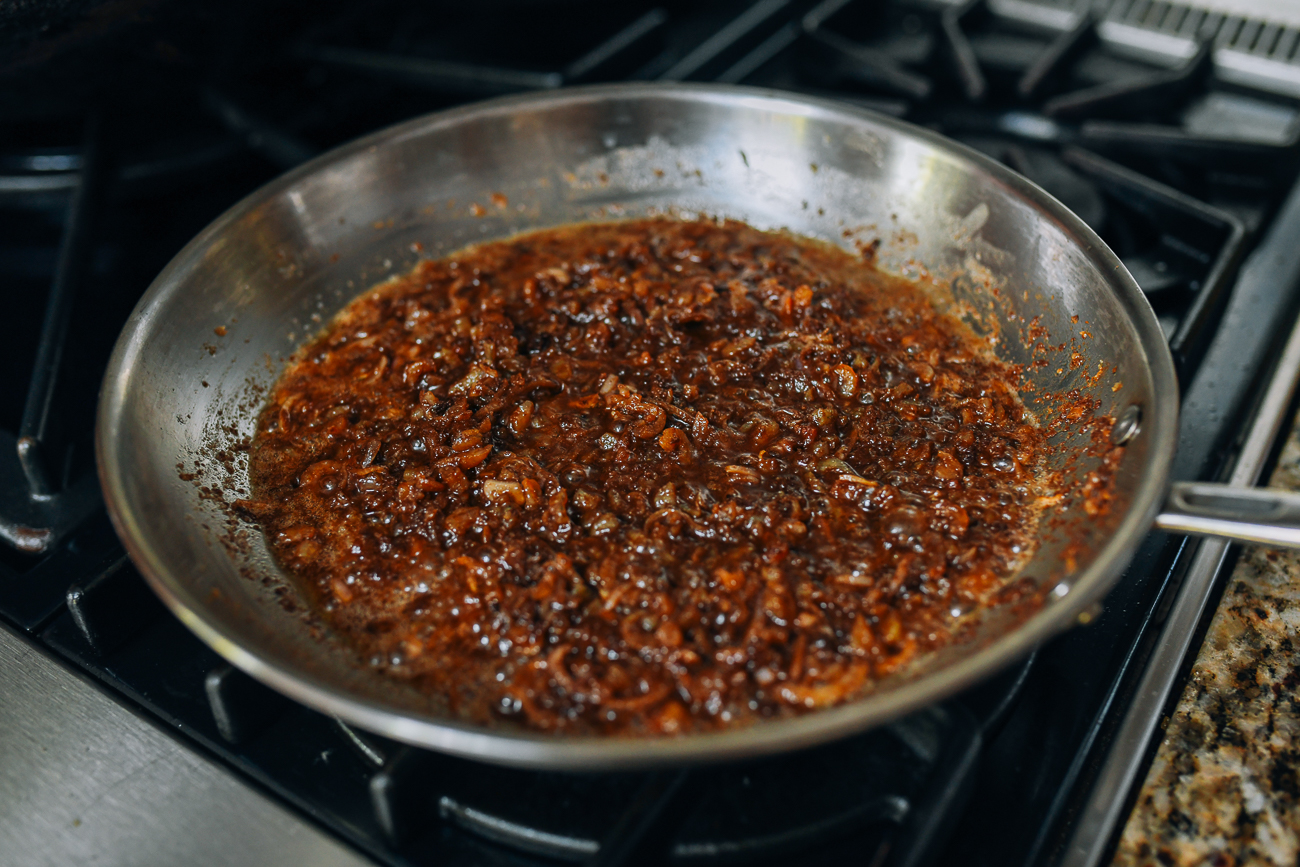
Next, add the chili, garlic and shallot paste.
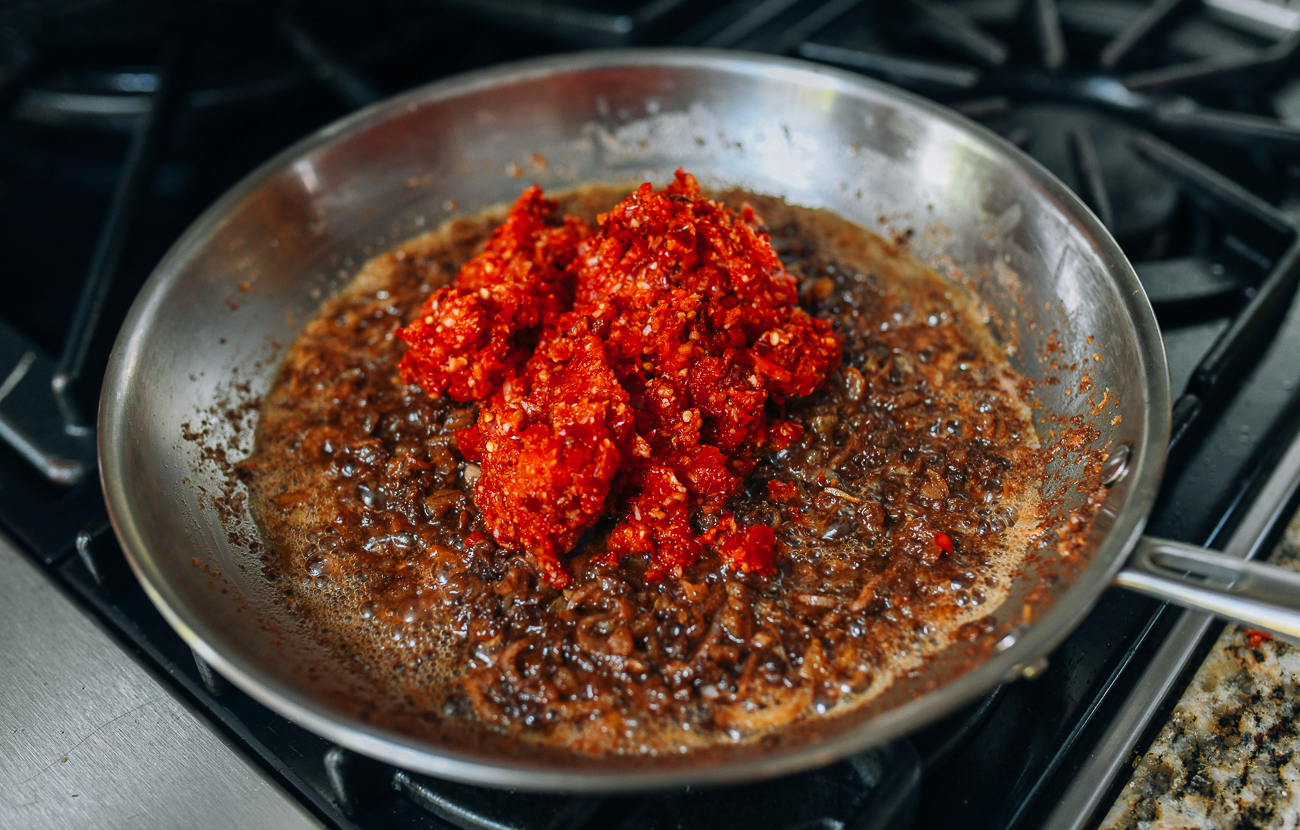
Stir to combine, and add ½ cup of the reserved pepper soaking water. Cook for 5 minutes, stirring occasionally. Stir in the fish sauce and brown sugar.

Continue to cook for another 15 minutes.
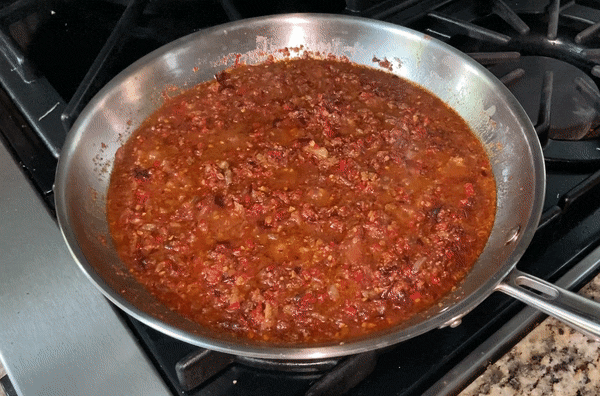
Let the mixture cool.
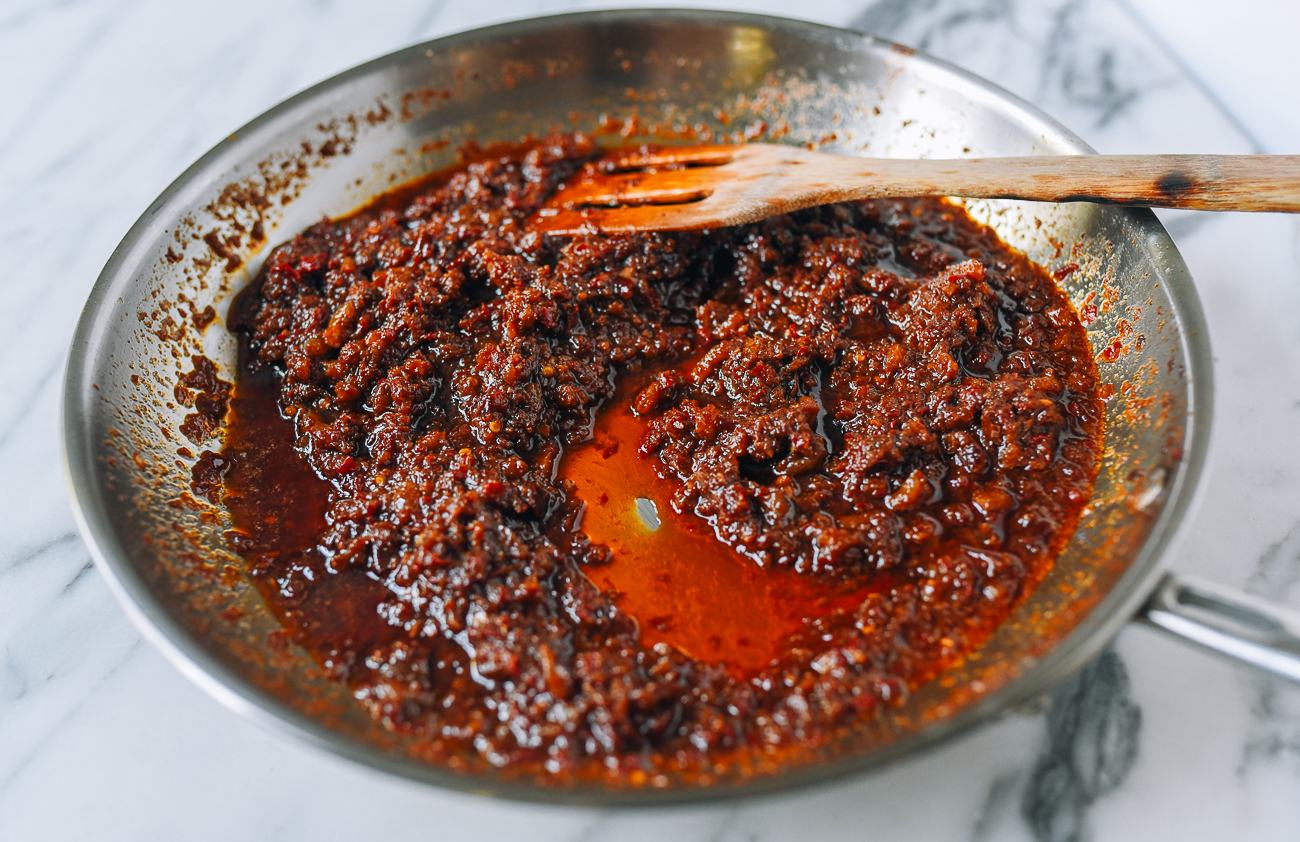
And transfer to a clean jar or other airtight container.

Refrigerate for up to 4 weeks, or freeze (it should last up to 1 year frozen). If you’re looking for other ways to use this sauce, it goes great with stir fried vegetables like water spinach in our Kang Kung Belacan recipe.
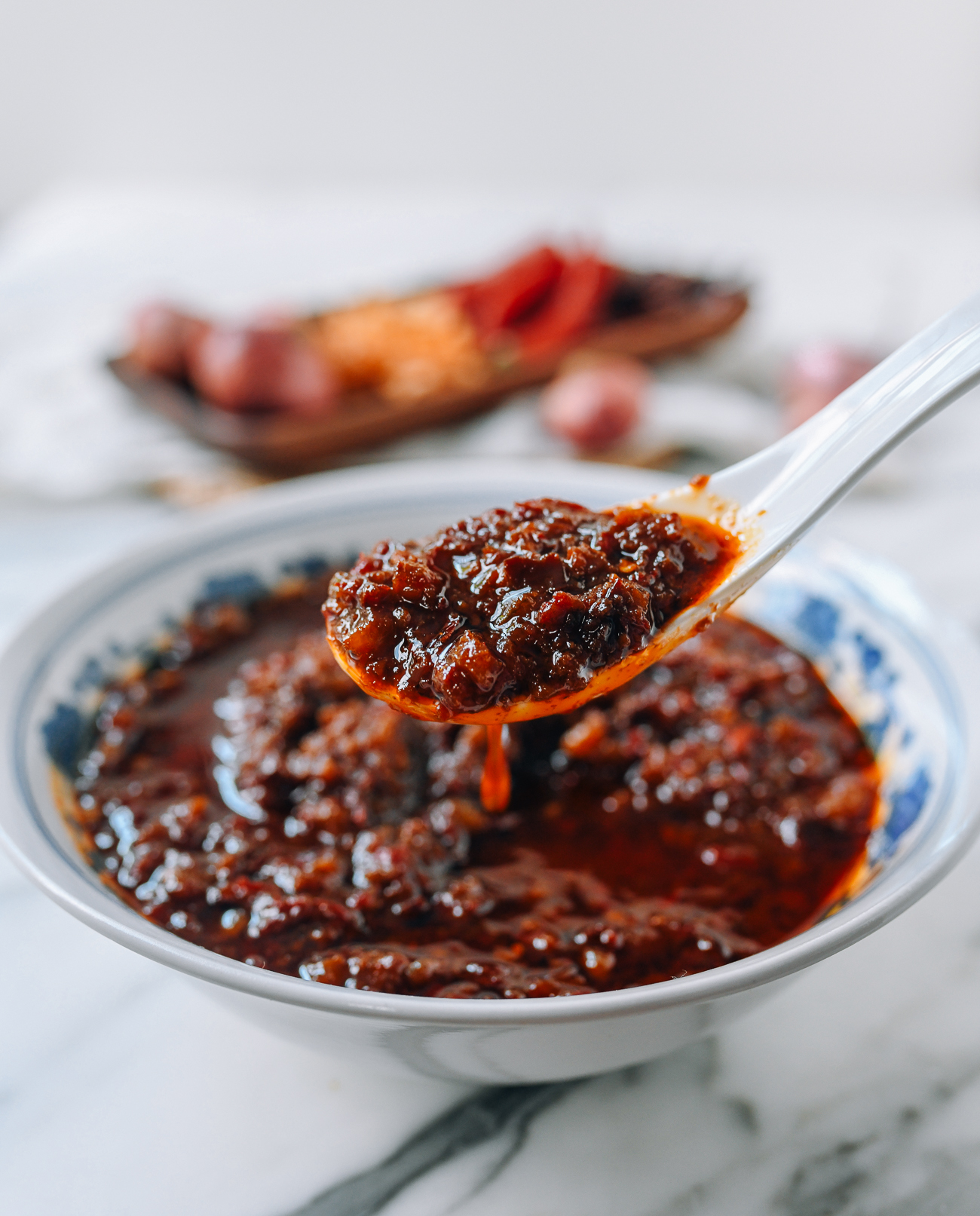
Belacan Sauce
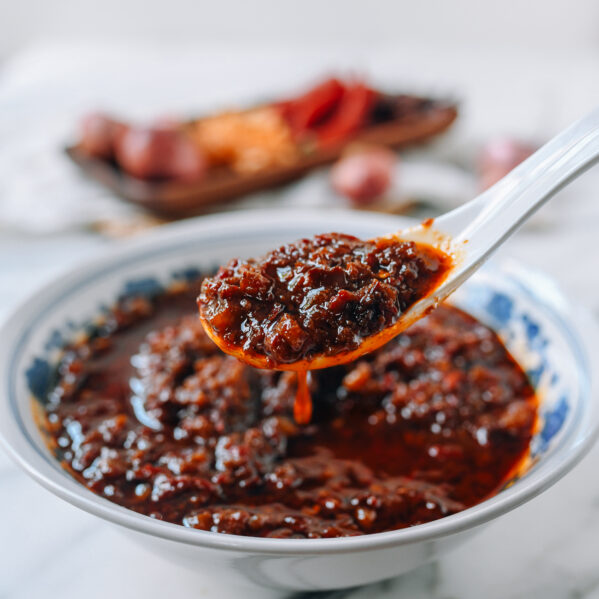
Ingredients
- 16 dried Sichuan chili peppers (16 dried peppers = 10g; deseeded)
- 7 holland chilies
- 3 Thai chili peppers (chopped, optional for added heat)
- 1 1/4 cup sliced shallots (about 6 large, divided)
- 8 cloves garlic (8 cloves = approx. 40g)
- 2/3 cup canola oil (or peanut oil)
- 1 cup dried shrimp (chopped)
- 3 tablespoons belacan shrimp paste
- 1 tablespoon fish sauce (optional)
- 2 tablespoons light brown sugar
Instructions
- Soak the de-seeded dried chili peppers in 1 cup of warm water for 15-20 minutes.
- While the dried peppers are soaking, de-stem and de-seed the Holland peppers, removing the membranes as well. You can leave the seeds in if you like your sauce very spicy. Cut each pepper into 3 pieces. If using, chop the Thai chilies.
- Take half of your shallots and finely chop them. With the other half, thinly slice them. (You can also chop them, but I think slices add another textural dimension to the final sauce.
- Drain the dried chili peppers, and set aside the soaking water. To the bowl of a food processor or blender, add the dried peppers, Holland peppers, Thai chilies (if using), half of the shallots (i.e. your chopped shallots, setting aside the slices for later), and garlic. Pulse until the mixture is smooth, or if you prefer, a coarse paste. Use a rubber spatula to scrape down the sides of the bowl to ensure the mixture is evenly processed.
- Heat a frying pan or wok over medium heat. Add the oil and chopped dried shrimp. Fry over medium to medium low heat for 3-5 minutes.
- Put the belacan in a mortar and pestle to break it up (you can also put it in a small bowl and break it up with a fork). Add it to the pan. Cook for 3-4 minutes, until the belacan is melted into the sauce.
- Add the sliced shallots, and cook for 3-4 minutes, until translucent.
- Next, add the chili, garlic and shallot paste. Stir to combine, and add ½ cup of the reserved pepper soaking water. Cook for 5 minutes, stirring occasionally. Stir in the fish sauce and brown sugar. Continue to cook for another 15 minutes.
- Let the mixture cool, and transfer to a clean jar or other airtight container. Refrigerate for up to 4 weeks, or freeze (it should last up to 1 year frozen).
